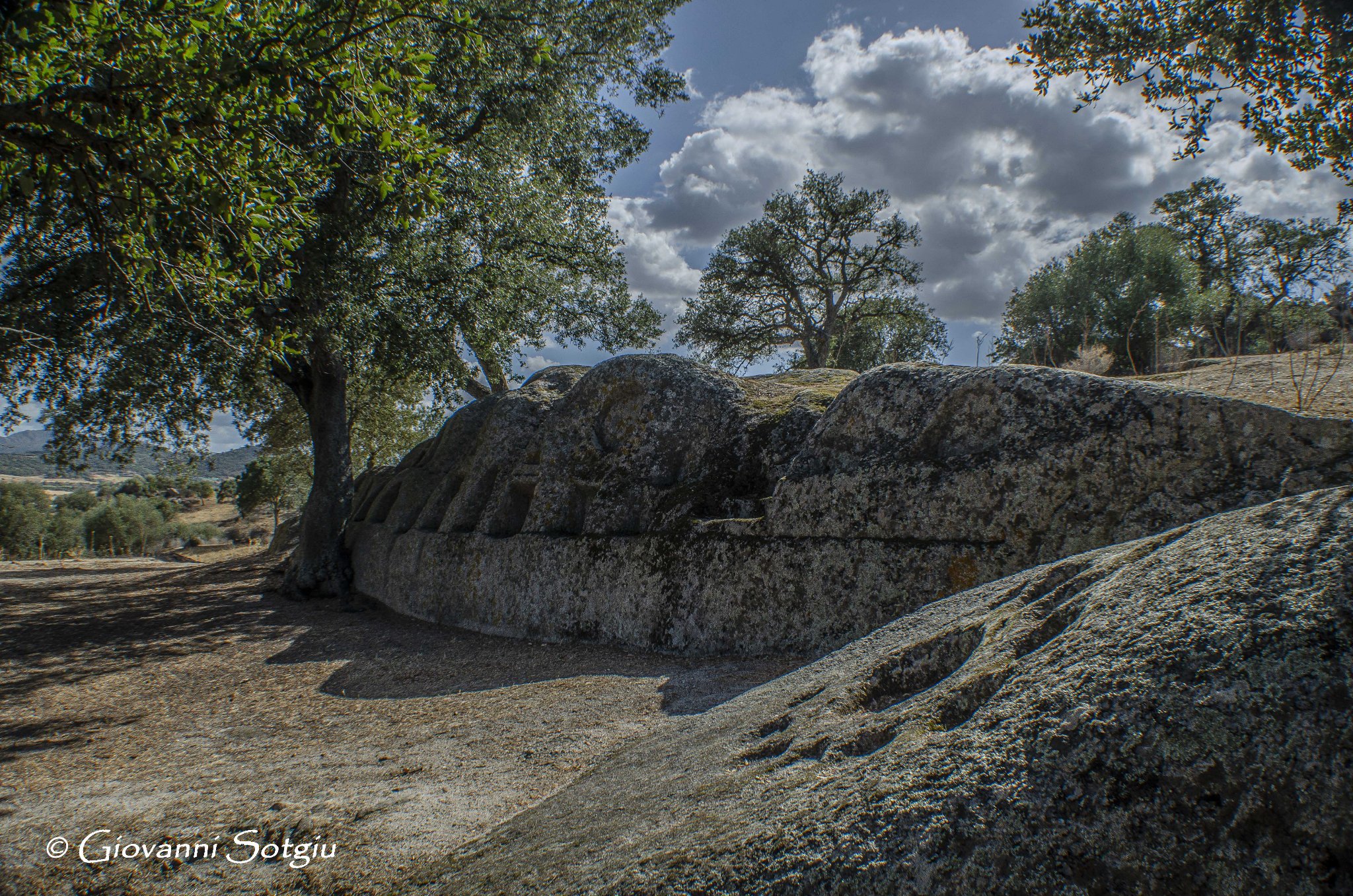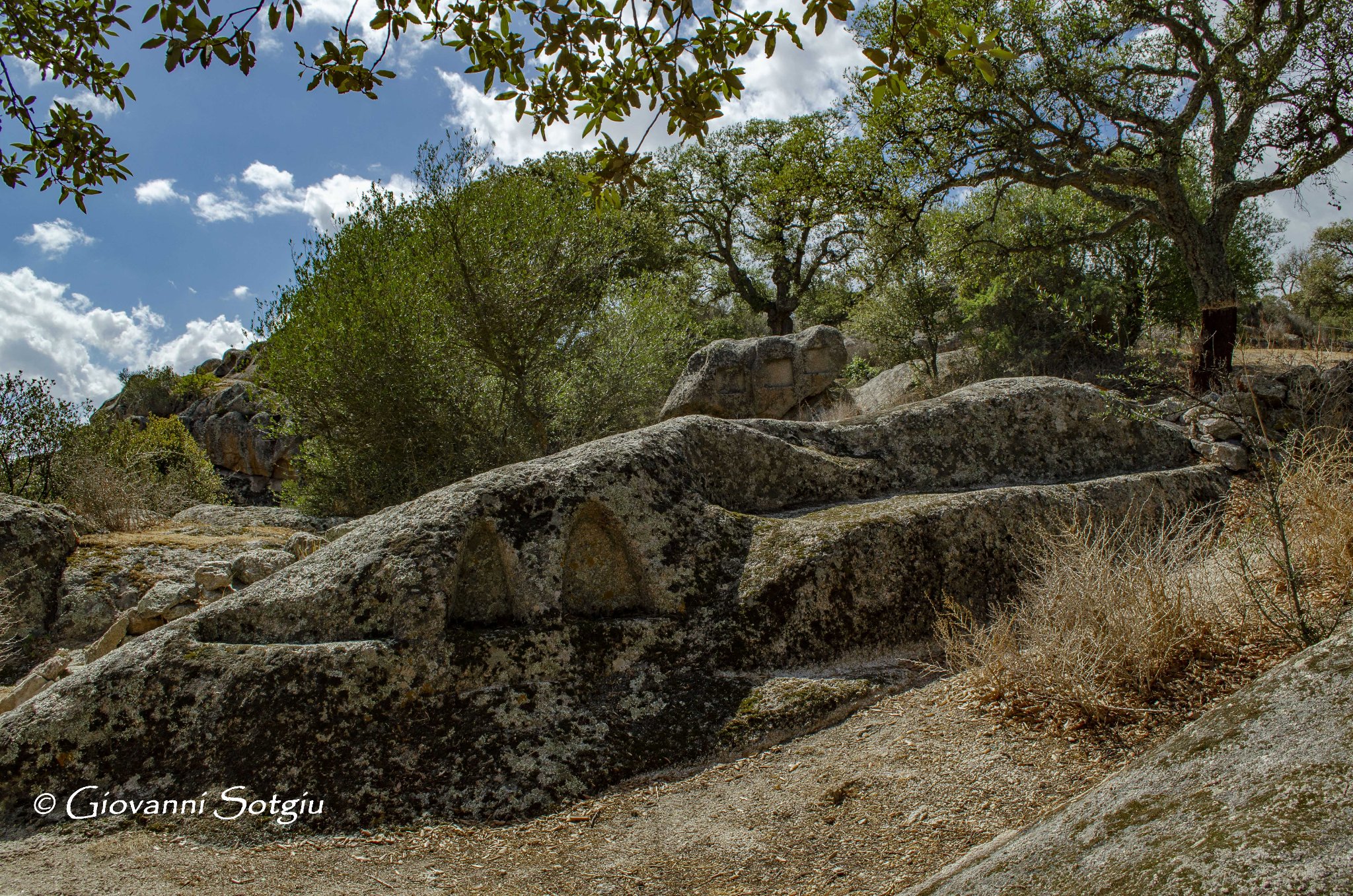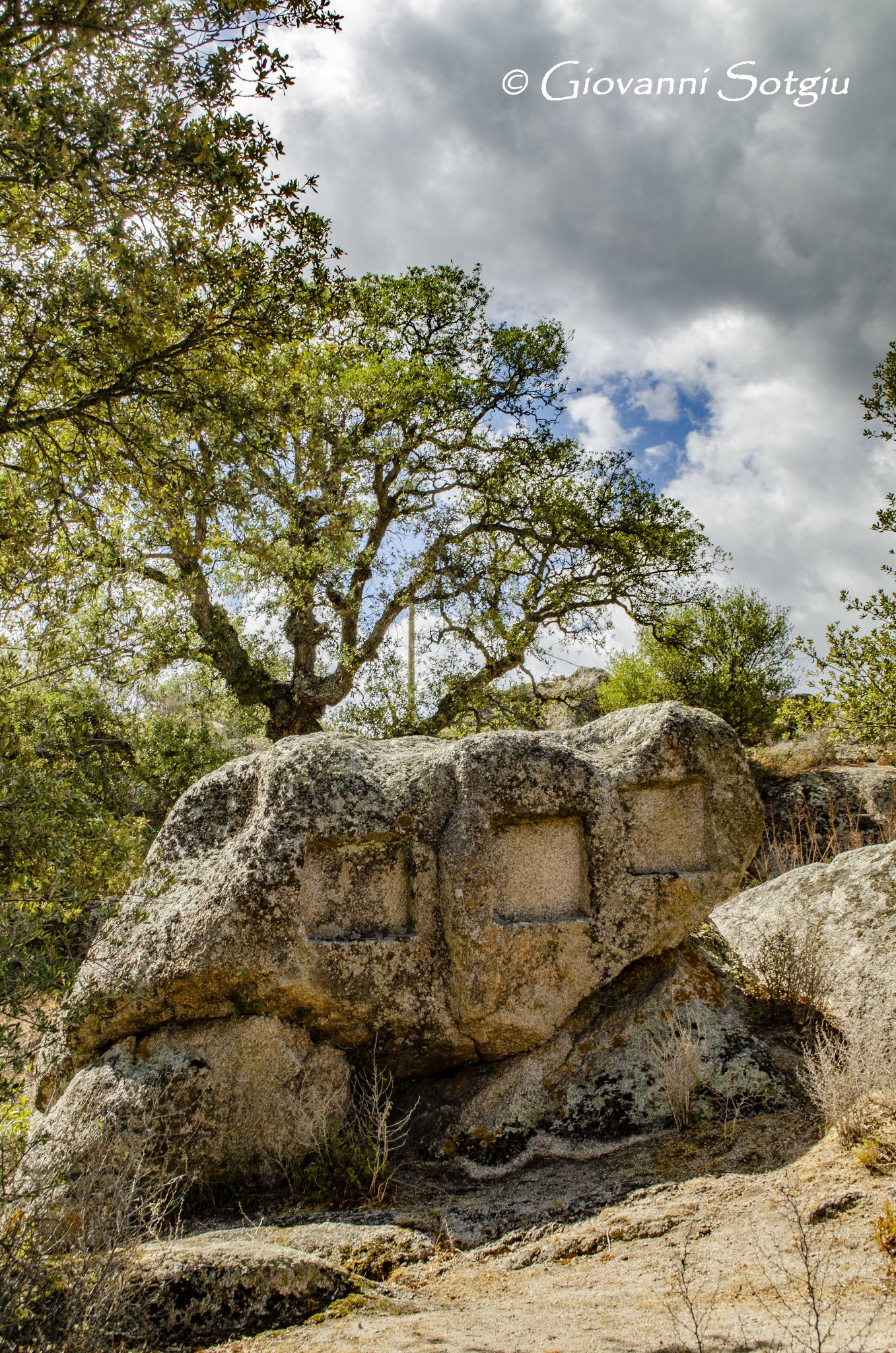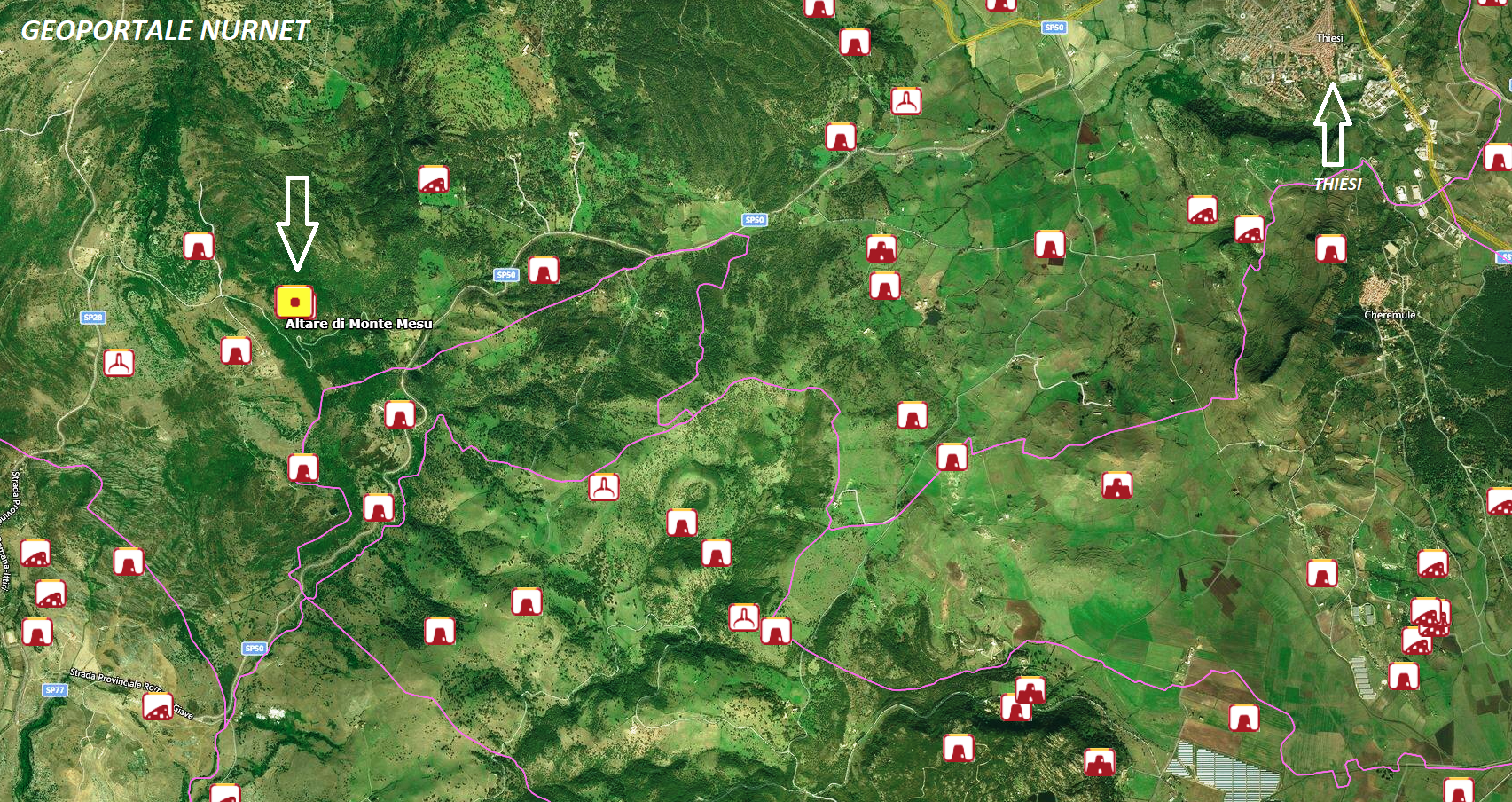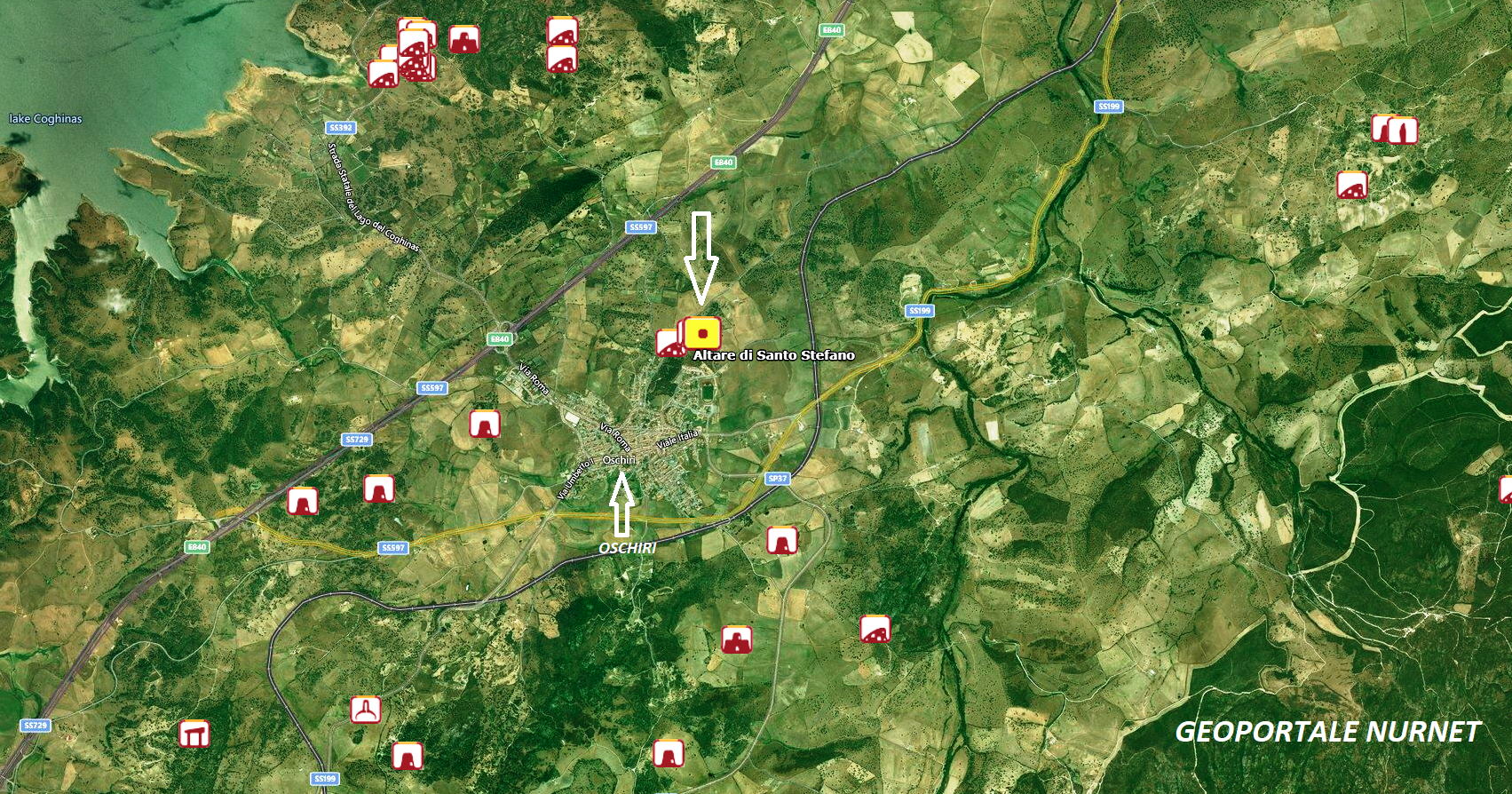“The Altare” of Monte Mesu, a stone structure of uncertain age “consists of three basins, so much so that in Thiesi the monument is called “The Peaks of Monte ‘E Mesu” (picas=basins). Two of them are square, not very deep; the third is truncated-conical and is deeper than the other two. All the “trogoli” are connected to each other with small incisions, as if they were meant to serve as a relief valve for perhaps some liquid (water, probably) that flowed from one basin to another; since the boulder in which they are carved is sloped, we can hypothesize that the liquid passed from one basin to another until it reached the truncated-conical shape, that is, the last one. This, once full, would cause the liquid to overflow, due to being overfilled, outside of the monolith. The liquid was collected in some container, or it fell to the ground, following a path on the ground, which could be predefined or not, but there is no evidence of this. (Pieragica)
What makes the archaeological site of Santo Stefano, in Oschiri, characteristic and special is the presence of a large granite stone about 10 meters long, improperly defined.”altarDue to its frontal position relative to the church, it has not yet been possible to frame its historical function, given the absence of any archaeological investigation. It features a series of cavities of different shapes: at the lower part of the rock, there are twelve triangular and square cavities; at the upper part, there are nine triangular, square, and one round cavity. To the right of the rock ledge, there is a series of basins arranged in a circle, totaling twelve circular ones enclosing a larger central basin, all topped by a thirteenth basin placed exactly in the direction of the north. Even further to the right, a perfectly rectangular horizontal niche is crowned by a series of nine basins, each about 5-10 cm in diameter. To the left of the ledge, there is another rock that shows two triangular niches and a horizontal plane that is thought to have been used either for the deposition of votive offerings or to perform the incubation rite, although all this remains very uncertain. Such rock engravings are scattered throughout the site, and some of the geometric figures represented appear to be Christianized by the juxtaposition of the cross. In other cases, the cross should be dated to the same period as the altar.
What messages might the signs that abound in these mysterious and magical places conceal?
The photos of S’Altare di Monte Mesu are by ArcheoUriVagando. Those of the archaeological site of Santo Stefano in Oschiri are by Giovanni Sotgiu.






